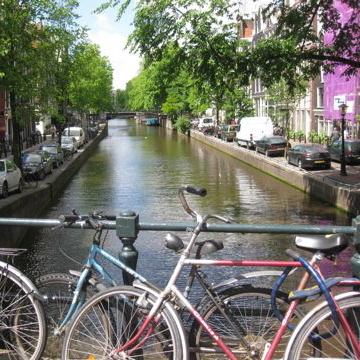 Amsterdam has long been an attractive destination for American travelers: it’s easily accessible through Schiphol Airport, it’s compact, and nearly everyone speaks English. But as with every new city, there are complications that can arise if you’re not prepared. David Latt reports on what’s happening in Amsterdam and the lessons he learned on the road.
Amsterdam has long been an attractive destination for American travelers: it’s easily accessible through Schiphol Airport, it’s compact, and nearly everyone speaks English. But as with every new city, there are complications that can arise if you’re not prepared. David Latt reports on what’s happening in Amsterdam and the lessons he learned on the road.
For American travelers headed to Europe, Amsterdam is an excellent gateway. It’s a compact city, hosting dozens of world-class museums, miles of picturesque canals, well-maintained parks, narrow streets with Old World charm, hundreds of outdoor cafes and cozy bars.
Most importantly, English is the second language. So don’t worry if you need help. You don’t have to ask, “Do you speak English?” because everyone does.
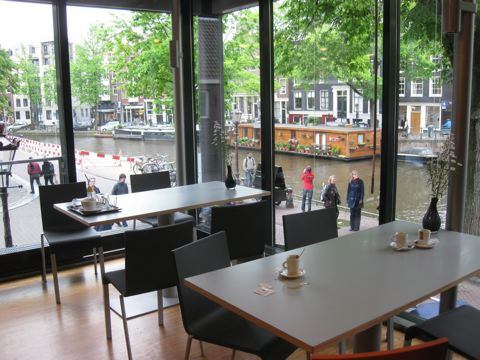 Even with so much going on, the scale of the old city is very people-friendly. Most buildings around the canals are three to five stories tall.
Even with so much going on, the scale of the old city is very people-friendly. Most buildings around the canals are three to five stories tall.
Cars and trucks avoid the narrow cobblestone streets, leaving pedestrians and bicyclists in charge. Every few blocks there is a central square (“plein”) with cafes, shops and markets.
Because the Dutch love gardens, many neighborhoods boast a park with large expanses of open space where families and friends can walk, picnic or just hang out. Besides Oosterpark, Hortus-Botanicus, Museum Square, Vondelpark, and Westerpark, there are dozens of smaller public and private parks, scattered through the city.
Even a small museum like the Museum Willet-Holthuysen has a lovely formal garden in back.
 In summer months, you’ll see mobs of young men and women from the U.S., U.K., Italy, and Spain partying together, usually drinking and often singing—mostly in bars, around the squares and walking through the Red Light District. Keeping to the quieter parts of town, families with kids visit the museums, canal cruises, and entertainment centers. Couples get around town on bicycles or take long walks, hand in hand, along the canals taking in the sights and enjoying being together.
In summer months, you’ll see mobs of young men and women from the U.S., U.K., Italy, and Spain partying together, usually drinking and often singing—mostly in bars, around the squares and walking through the Red Light District. Keeping to the quieter parts of town, families with kids visit the museums, canal cruises, and entertainment centers. Couples get around town on bicycles or take long walks, hand in hand, along the canals taking in the sights and enjoying being together.
What’s great about Amsterdam is that the city works for all of them.
Getting Around Amsterdam: You’ll Need A Map
When I first arrived in Amsterdam, I arranged for a tour guide to help me figure out the city.
We took a leisurely walk around the old city, starting at Centraal Station, the mammoth transportation center that is the hub of the city’s transportation system. All the trams, trains, ferries, subways, buses, and canal boats originate at Centraal Station. As Frans, my guide told me, “If you get lost in Amsterdam, just hop on any tram or bus that says ‘Centraal Station’ and you can start all over again.”
 Following the narrow streets that cross the canals, we walked through the Red Light District and several entertainment centers with clusters of bars and cafes, some large like Dam and Rembrandt squares, some small like Spuistraat.
Following the narrow streets that cross the canals, we walked through the Red Light District and several entertainment centers with clusters of bars and cafes, some large like Dam and Rembrandt squares, some small like Spuistraat.
We passed innumerable churches, monuments, statues, small clothing shops, jewelry stores, large department stores, high-end boutiques, and flea-markets. It was obvious why Amsterdam is such a popular destination. But there was a problem.
Without a tall landmark as an anchor, walking down one narrow street after another, I felt dizzy as if we were walking in circles. Which is exactly what we were doing.
If you live in a city based on a grid, like New York or Los Angeles, Amsterdam will feel very confusing. The streets are not laid out in a simple north-south, east-west configuration. That’s because the city is organized around the four original, 17th-century canals—Singel, Herengracht, Keizersgracht, and Prinsengracht—which encircle the old city like rings. Starting on the north-western side of Amsterdam, the canals curve south and then circle up to the north-eastern edge of the city.
All those curving canals mean that the streets running alongside will do some acrobatics themselves. So if someone tells you to meet them on Singelgracht, they could be in the western, southern, or eastern part of the city.
To make matters more confusing for first-time visitors, streets change their names without warning. In the center of town, even a major thoroughfare like Rokin changes its name to Damrak when it travels north through Dam Square.
 So if you get lost, don’t blame yourself. It’s not your fault. What you need is a good map. Unfortunately, that’s easier said than done.
So if you get lost, don’t blame yourself. It’s not your fault. What you need is a good map. Unfortunately, that’s easier said than done.
The problem with most maps of Amsterdam is they don’t indicate all the streets, so when you get lost and you’re staring up at the street signs on the sides of the building, the map won’t help.
The one exception is the “Cito Plan Amsterdam” (15th edition), a large map that won’t fit in your back pocket but shows most of the streets in Amsterdam as well as the stops on the tram (electric streetcar), metro (subway), and bus routes, with an easy to use street index on the back. The map is widely available in department stores, tourism offices, tobacco shops, and gas stations, as well as on line.
The “Amsterdam Museums Guide to 37 Museums” from the Amsterdams Uitburo is another helpful map, given away free at participating museums. Besides locating the most popular museums, it also describes each of the museums, gives the address, phone number, days and times of operation, as well as the tram and subway stops for each.
Working Around Construction
Amsterdam is getting a face lift in both its business and leisure amenities.
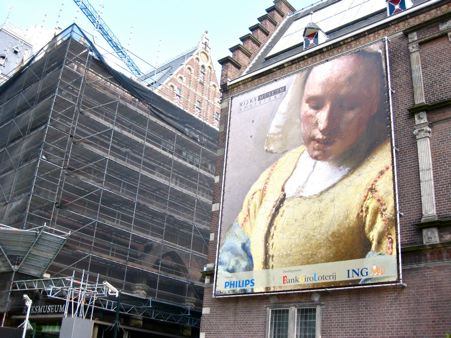 Recent expansions of the nearby RAI convention complex are a statement on Amsterdam’s eagerness to attract business travelers. The 2009 opening of the RAI Elicium building marked the completion of a six-year, €110-million investment. This, in turn, is giving a boost to nearby hotels like the Novotel Amsterdam City, which recent underwent its own two-year renovation to entice the influx of business travelers.
Recent expansions of the nearby RAI convention complex are a statement on Amsterdam’s eagerness to attract business travelers. The 2009 opening of the RAI Elicium building marked the completion of a six-year, €110-million investment. This, in turn, is giving a boost to nearby hotels like the Novotel Amsterdam City, which recent underwent its own two-year renovation to entice the influx of business travelers.
Note that parts of the city that are usually very picturesque are now obscured by scaffolding. Important public buildings are being renovated, including Centraal Station, the Royal Palace in Dam Square, the Rijksmuseum and the Stedelijk Museum. Subway construction is very visible in the busy commercial district on Rokin and Damrak. For the most part you’ll only be mildly inconvenienced, although some popular venues like the Stedelijk are temporarily closed.
Amsterdam prides itself on being a dynamic city and the best way to keep up with new developments and activities to check out the Netherlands Tourism Board’s frequently updated site: www.holland.com.
Money Matters
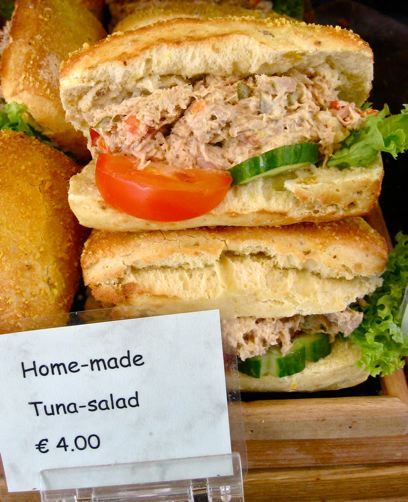 Some good news for Americans: For the moment, the drop in the exchange rate amounts to a 15 percent increase in purchasing power.
Some good news for Americans: For the moment, the drop in the exchange rate amounts to a 15 percent increase in purchasing power.
The bad news is that American credit cards are not widely accepted in Holland. At high-end restaurants and hotels, your credit card might be honored, but maybe not, so ask before you run up any bills. When you’re walking around town, stopping in cafes, or shopping in small stores, you’ll definitely need a pocketful of euros.
Don’t wait to buy euros at your hotel. Get them at Schiphol Airport. But don’t trade your cash. Find a bank kiosk, as you’ll get a better rate using your debit card. If you do business with more than one bank, before you leave home, check to see which one has the best deal for overseas ATM withdrawals. Each time you make a withdrawal, you’re charged a fee so take out enough for a week or more so you cut down on bank fees.
Gearing Up Your Gadgets
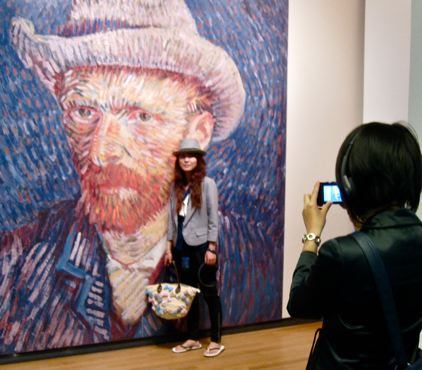 Although we always resolve to “travel light,” we still tend to bring along all of our electronic toys. Very few countries use the same plugs we do, so bring an electrical adapter in case your hotel doesn’t have one. So you can charge your cell phone, laptop, and digital camera overnight, bring along a three-way plug to use with the adapter.
Although we always resolve to “travel light,” we still tend to bring along all of our electronic toys. Very few countries use the same plugs we do, so bring an electrical adapter in case your hotel doesn’t have one. So you can charge your cell phone, laptop, and digital camera overnight, bring along a three-way plug to use with the adapter.
Most American cell phones don’t work in Holland. The ones that do, carry hefty roaming charges. Unfortunately disposable cell phones aren’t readily available, so you might have to get used to living unplugged.
Mostly, that’s OK, but if you’re meeting a friend or family member and you’re running late, you won’t have a way to connect. (Tip: it’s good to meet at a cafe where if one of you is late, it won’t matter. You’ll have a second beer and another plate of bitterballen.)
Cafe and Restaurant Culture
If you want a cup of coffee, don’t ask for directions to a “coffee shop” because you’ll find yourself in one of the many shops where people go to have a joint or smoke hash. “Koffie houses” serve coffee. But don’t expect to find a Starbucks on every corner.
 There are only three in all of Holland.
There are only three in all of Holland.
When you are paying the bill in a restaurant or a cab, don’t tip. If you liked the service, the polite thing to do is round-up the payment. Leave €2.00 for instance on a €1.75 bill. The tip is always included in the charge. On those very rare instances (I didn’t encounter any) where the tip is not included, the menu will say so. For an American, not paying a tip feels bad, but paying an American-style 15 percent to 20 percent tip is considered inappropriate.
Restaurants are not cheap in Amsterdam. Asian food, for example, is priced higher than Americans would expect. Dishes that cost $7-$10 in the States, might cost double that in Amsterdam. The exchange rate and the fact that tips are included somewhat off-sets the added cost.
Public Transportation
Buses, trams, and the subway criss-cross Amsterdam in a very efficient way. Since June 1 of this year, to use the public transportation system, you have to buy a OV-Chip Card, known to the Dutch as the OV-Chipkaart, which can be loaded with any amount.
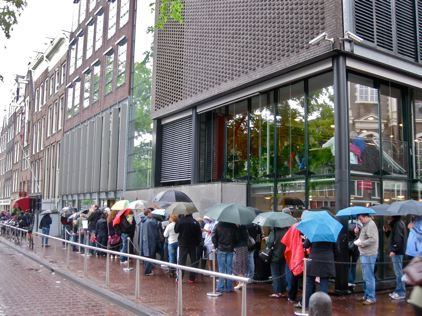 Single rides are expensive (€2.60). If you’re only in town for a short amount of time and want to see as much of Amsterdam as possible, an economical way to use the Chip Card is to buy a time period during which you have unlimited rides: 24 (€7.00), 48 (€11.50), 72 (€15.50), up to 120 (€23.00) hours. The clock starts the first time you use the card. At Metro stations and on the tram, you will need to use your Chip Card to enter and exit.
Single rides are expensive (€2.60). If you’re only in town for a short amount of time and want to see as much of Amsterdam as possible, an economical way to use the Chip Card is to buy a time period during which you have unlimited rides: 24 (€7.00), 48 (€11.50), 72 (€15.50), up to 120 (€23.00) hours. The clock starts the first time you use the card. At Metro stations and on the tram, you will need to use your Chip Card to enter and exit.
Another option for tourists is the I Amsterdam Card which allows for unlimited rides during 24, 48, or 72 hour periods, plus a number of discount coupons to local businesses and access to almost all of the museums (but not the Anne Frank House). The cost is considerably higher.
Chip Cards and free copies of the tram, bus, and subway routes can be picked up at the GVB store across from Centraal Station or online, and also at the many information kiosks, indicated by signs with an “i”.
A word of caution. Some of the public transportation maps are wrong.
For instance, when I was on the #4 tram on my way to meet a friend at Rembrandt Square (Rembrandtplein), I used my map to help me navigate. When we headed north on Vijzelstraat, I rechecked the map. The tram was supposed to be on Utrechtesestraat, traveling between Frederiksplein and Rembrandtplein. Utrechtesestraat not Vijzelstraat! (Did I mention it took me awhile to get used to the long, unfamiliar-sounding street names?)
But it wasn’t me, it was the map. Subway construction had forced the rerouting of the #4 tram line and the maps haven’t been changed. Given ongoing construction, when you’re getting directions from the hotel’s concierge, ask whether there have been any route alterations. If you want to double-check, you can always ask the tram driver.
Remember, too, that trams and the subway only run between 6 a.m. and 1 a.m. Some routes end even earlier. If you’re planning a late night, ask about the night buses which run every hour until regular service resumes in the morning.
Taxis are plentiful in the old part of the city, but expensive. Before the taxi moves a foot, the charge is €7.50, which makes even the shortest trip cost at least $15 to $20, depending on the distance and current exchange rate.
Renting a car is not recommended. Trying to navigate the narrow, pedestrian and bike-clogged streets of Amsterdam is challenging at best, and after you arrive at your destination you’ll be confronted by a bigger challenge: parking.
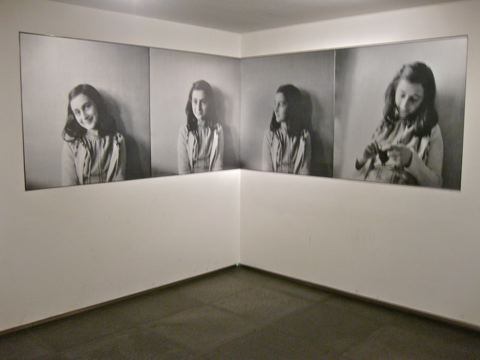 Car rentals are available if you want to travel outside of Amsterdam, but for most trips, the train is a convenient, affordable alternative. For example, if you want to visit the Friday morning cheese auction in Alkmaar with its young men and women in traditional costumes, the 45-minute trip costs only €13 for both ways.
Car rentals are available if you want to travel outside of Amsterdam, but for most trips, the train is a convenient, affordable alternative. For example, if you want to visit the Friday morning cheese auction in Alkmaar with its young men and women in traditional costumes, the 45-minute trip costs only €13 for both ways.
Amsterdam’s canals are not only picturesque, they’re functional. Canal tours, water taxis and canal buses leave from Centraal Station and offer a unique view of the city. Canal-Bus’ Hop on, Hop off Canal Cruise is a good way to see the city and visit major museums like the Hermitage, Rijksmuseum, and the Anne Frank House.
Crosswalks, Bicycles, and the Right of Way
In the States many cross walks have count-down signals indicating how much time remains to cross the street. In Amsterdam, the opposite is true. The count down clocks tell you how much time you have to wait. A motorcycle officer explained, “That’s how we get the pedestrians and bicyclists to obey the red light by letting them know they only have a few seconds to wait. Otherwise they don’t wait for the green light and we have accidents.”
You’ll also notice at some busy intersections that when the green light comes on, the signal clicks like an over-excited alarm clock. As the time to cross runs out, the clicks slow down. When they stop, the red light comes on.
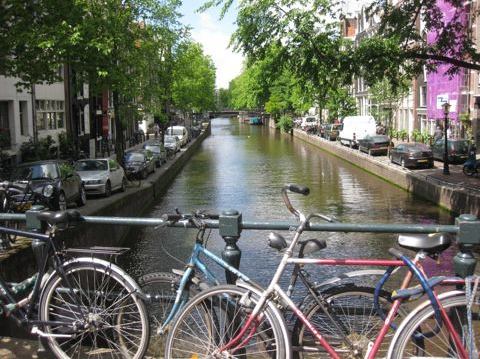 Amsterdam is bicycle heaven because bicyclists have the right of way. Bike rentals are widely available. At Centraal Station where all the trams, buses, subways, ferries, canal tours, and trains stop, there is also a MacBike store (Stationsplein 5), so when you arrive in town, you can pedal away and start your tour of the city.
Amsterdam is bicycle heaven because bicyclists have the right of way. Bike rentals are widely available. At Centraal Station where all the trams, buses, subways, ferries, canal tours, and trains stop, there is also a MacBike store (Stationsplein 5), so when you arrive in town, you can pedal away and start your tour of the city.
The most efficient way to get around Amsterdam is on a bike. However, keep in mind that while bicycles are allowed on the subway, they are not permitted on the tram.
In a city of 750,000, it is said there are probably that many bicycles and many of them have been stolen at least once. When you rent a bicycle, it would be wise to buy theft insurance and to listen carefully to the instructions about how to lock your bike.
While streets may be marked one-way, that only applies to cars and trucks. Bicycles and Vespas, which share the bike path, can go whichever way they want. So when you’re crossing a one-way street, be sure to look both ways.
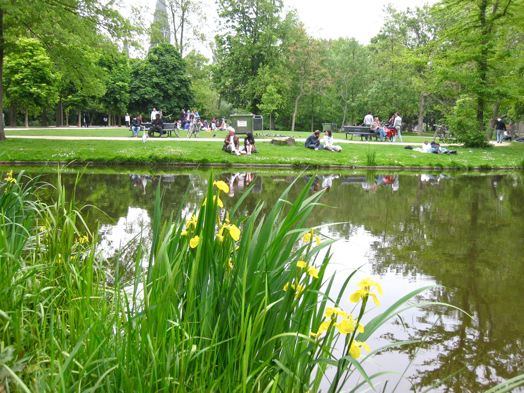 In Holland, bicycles aren’t just a sunny-weather means of transportation. During my recent trip, I got a taste of bicycling, Amsterdam-style. Traveling with my raincoat, I was bicycling around the old city when it started to drizzle. With my hood on, the light rain wasn’t a problem. I saw parents with their children bundled up the same way, although some people preferred umbrellas to hooded raincoats. Then the drizzle turned into a steady shower. I was drenched in a few minutes. Luckily a cafe was up ahead so I locked up the bike and took refuge inside.
In Holland, bicycles aren’t just a sunny-weather means of transportation. During my recent trip, I got a taste of bicycling, Amsterdam-style. Traveling with my raincoat, I was bicycling around the old city when it started to drizzle. With my hood on, the light rain wasn’t a problem. I saw parents with their children bundled up the same way, although some people preferred umbrellas to hooded raincoats. Then the drizzle turned into a steady shower. I was drenched in a few minutes. Luckily a cafe was up ahead so I locked up the bike and took refuge inside.
I had stumbled into ‘Skek (Zeedijk 4), a cozy student-run restaurant-bar a few blocks from Centraal Station. First I had a coffee to ward off the cold, then a sandwich to build my strength, and a whiskey because, well, because I was on holiday.
Remarkably I discovered that in the time it took to enjoy my late lunch, my clothes had dried and I was ready to head back out. It was still raining, but I had learned an important Dutch lesson: if you get wet, stop in a cafe, have something hot to drink and a bite to eat. You’ll be just fine.
The Dutch are a generous and polite people, but not when you violate their right of way. When you’re walking, stay on the sidewalk. If you hear a bell ringing on the left, move to the right, a bicycle is about to pass you. If you don’t move quickly enough, you’re likely to hear the Dutch equivalent of “Are you deaf?” or worse.
If you are riding a bicycle yourself, remember what you learned as a kid. Don’t stop suddenly and always use arm signals so you won’t cause an accident. Better safe than sorry and you don’t want to learn the local rules the hard way.
Related links on PeterGreenberg.com:
- Off the Brochure Travel Guide: Amsterdam
- Guide to International Gay Pride Events
- European Budget Travel: NOT Paris in the Spring
- River Cruises: Barging Through Europe
Text and photos by David Latt for PeterGreenberg.com. Visit David on the Web at MenWhoLiketoCook.com for travel and foodie tips.













